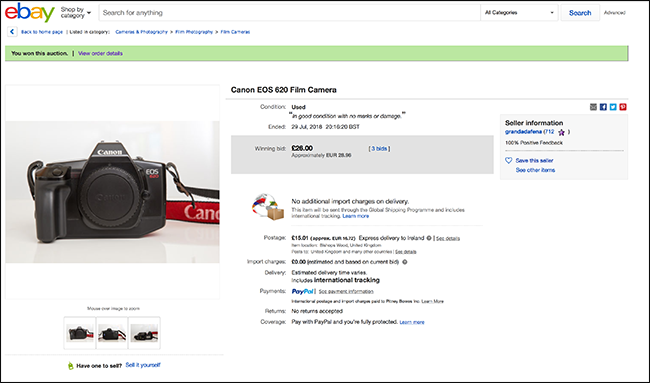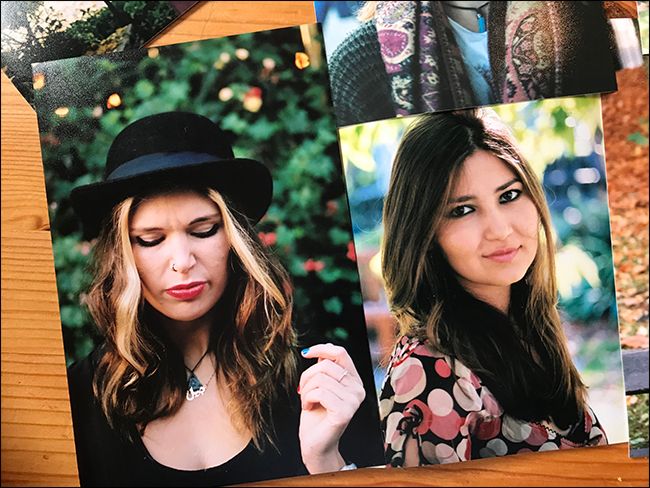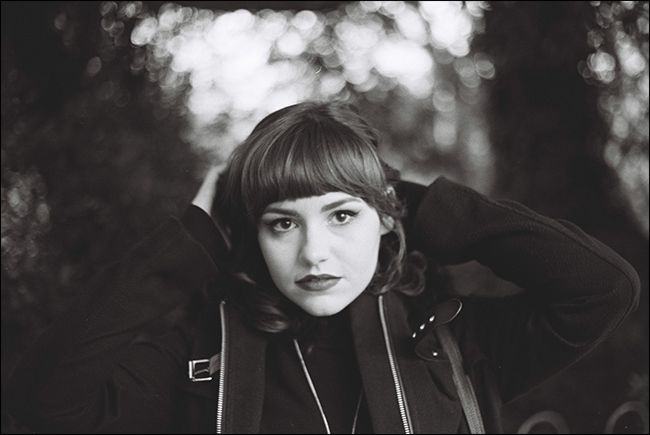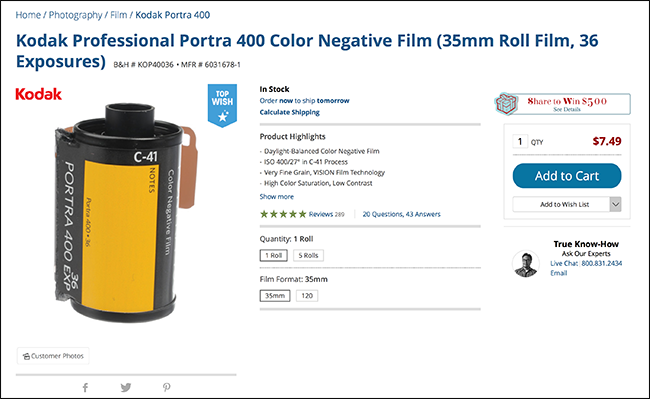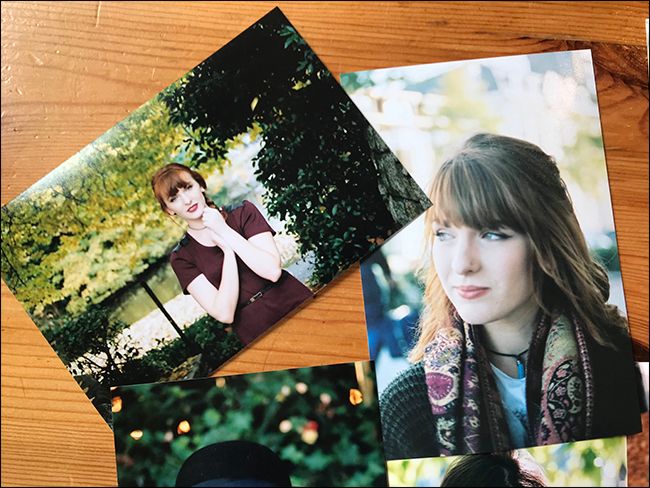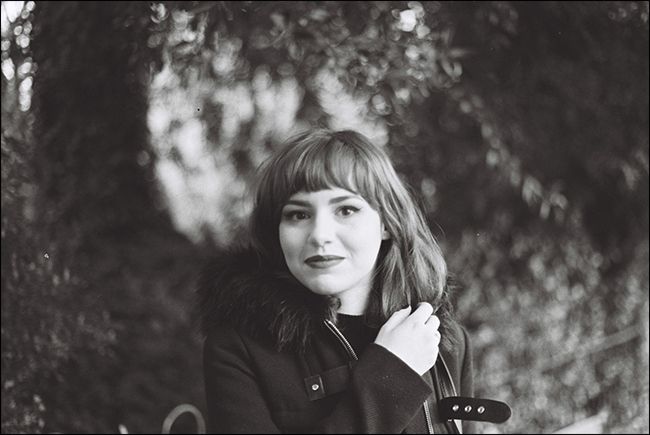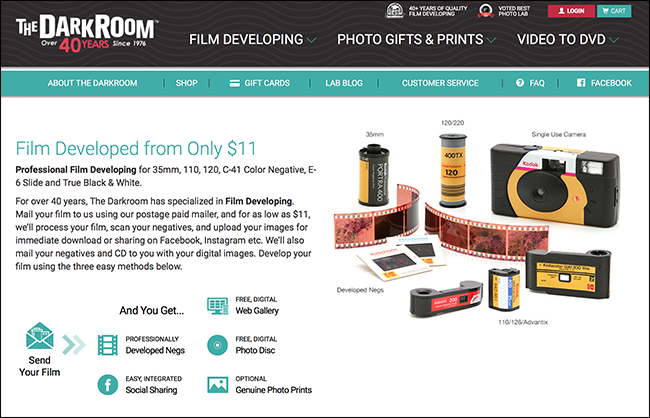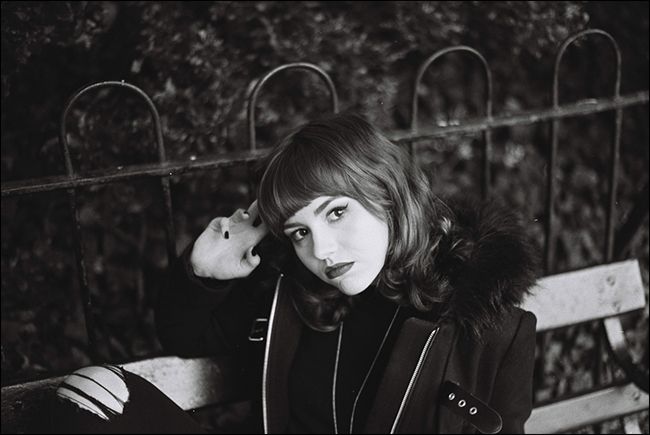Quick Links
Film photography is making a comeback—Kodak has just relaunched Ektachrome, a film they discontinued five years ago—and for a good reason: when everything is digital, going analog is fun. It can also make you a much better photographer by forcing you to slow down and think. Here’s how to get started.
A Few Key Terms
The high-quality digital camera market is more homogenous than the film camera market was. You really only have three major digital players—Canon, Nikon, and Sony—with two camera designs—DSLR and mirrorless—and two sensor sizes—crop sensor and full frame.
The old film market, by contrast, was like the Wild West. There were dozens of serious camera manufacturers—including Leica, Pentax, Olympus, Minolta and many more—with different camera designs—including SLRs, rangefinders, medium format cameras, large format cameras, and instant cameras—that could all use hundreds of different film stocks from yet more manufacturers—like Kodak,Ilford, and Agfa. The combinations were practically endless. With that in mind, lets hammer out some key terms.
- An SLR is a single lens reflex camera. They’re the precursors of the modern DSLR.
- A rangefinder is a mirrorless camera that was popular with street photographers.
- Medium format and large format cameras shoot film stock that’s larger than 35mm. They’re more expensive so probably not the best camera to go with if you’re just starting out.
- Instant cameras are basically old school Polaroids. The film doesn’t need to be professionally developed.
- 35mm film stock is the most common film size. It normally comes in rolls of 36 exposures and works with any 35mm camera.
Getting Your First Film Camera
If someone in your family has an old film camera and a lens or two lying about, dig it out, and you’re sorted—at least to start with. If you’re not that lucky, then let’s look a little deeper into buying your first film camera.
Film cameras vary in price pretty dramatically. A rare, desirable medium format camera in good condition could sell for thousands of dollars. On the other hand, you can pick up a solid 35mm SLR for less than $50. To start with, you should aim for the lower end.
If you shoot Canon or Nikon, then I’ve got some good news: get the right film camera and you’ll be able to use most of your existing lenses. Canon’s EF mount is from the late-80s and Nikons F-Mount is from the late-50s. For Canon shooters, I’d recommend the Canon EOS 620; I got one in great condition for $40 on eBay. For Nikon fans, check out the F2 or F3. They go for around $100. There are lots of these cameras still out there.
If no one you know has an old film camera and you don’t use Canon or Nikon lenses, then your options are limitless. You need to decide how much you want to invest in a system and also how many “modern” features like autofocus you want. If there’s a secondhand camera shop nearby, I’d recommend you go and talk to someone in there. You’ll be able to handle a few of the cameras and see what you like. Otherwise, set your budget and have a look on eBay. You really only need a single lens to get started since—especially if they’re in good condition—lenses tend to hold their value better.
Selecting Films
One of the joys of film photography is that different film stocks give your images a totally different feel. A snapshot film like Agfa Vista Plus gives a totally different look to a portrait film like Kodak Portra or a black and white film like Illford HP5.
Here’s some shots with Portra.
And here’s one with HP5.
These are just straight out of the camera film photos.
Film is also what controls the ISO, rather than your camera. You can get different films in different ISO. Most films are between about ISO 100 and ISO 800 but you can find some that are higher.
White balance, similarly, doesn’t exist with film photography. Different films give different colours. Most are designed to be shot in daylight or overcast days. Any marketing description of a specific film will tell you what it’s white balanced for.
You can buy film stock as individual rolls or at a small discount in boxes of three rolls. I recommend grabbing single rolls of every film stock you can get your hands on and trying them out. The whole point of shooting film is that it’s fun to play around. If you find a particular one you like, you can stock up on it.
Going Out and Shooting
Once you’ve got your camera loaded with film, it’s time to go out shooting. The ISO is set by the film so that will limit the range of lighting conditions in which you can shoot. If you’ve got a roll of Kodak Portra 400, you’re not going to be able to shoot in super low light.
While your camera probably has an automatic mode, I recommend taking some sort of manual control. Aperture priority mode, as always, is the best compromise. You set the aperture, the film sets the ISO, and the camera sets the shutter speed. You just need to make sure your aperture is wide enough to give you a fast enough shutter speed.
Note, while the film sets the ISO, your camera might require you to manually enter the film’s ISO value. Newer film cameras detect it automatically but older ones don’t. To find out how to do this, as well as how to change camera mode and dial in settings, check out your camera’s manual online.
Shooting with film for the first time is an experience. I still look down at the back of my camera expecting to see a preview of the image I just took. You also only get 36 shots before changing film. That’s not a lot if you’re used to just blasting away on burst mode.
The biggest problem you’ll encounter is missing focus. A lot. If your camera is manual focus, then at wider apertures, you’re probably going to be wildly off the mark. I know I am.
Even autofocus systems have nowhere near the accuracy that you’re probably used to with your digital camera. Expect to get lots of bad shots until you get a feel for your film camera. But hey, that’s half the fun.
Getting the Film Developed
When you’ve shot your first roll of film, it’s time to get it developed and printed. Most camera shops will do it although there are also online services. Expect to pay between $10 and $20 depending on where you go, how many prints you want, how quickly you want it done, and whether you want the negatives scanned as well.
Oh, that’s right. While film is an analog technology, you can get the negatives scanned into digital images so you can edit them, post them on Facebook, and otherwise do what you like.
Shooting film is addictive. I’m friends with a couple of models and one fun thing we do is shoot a roll of film then drop it in for one-hour development while we get a drink. I also like to shoot a single roll of film over a weekend trip. Try it out and, trust me, it will improve your eye for digital photos.


